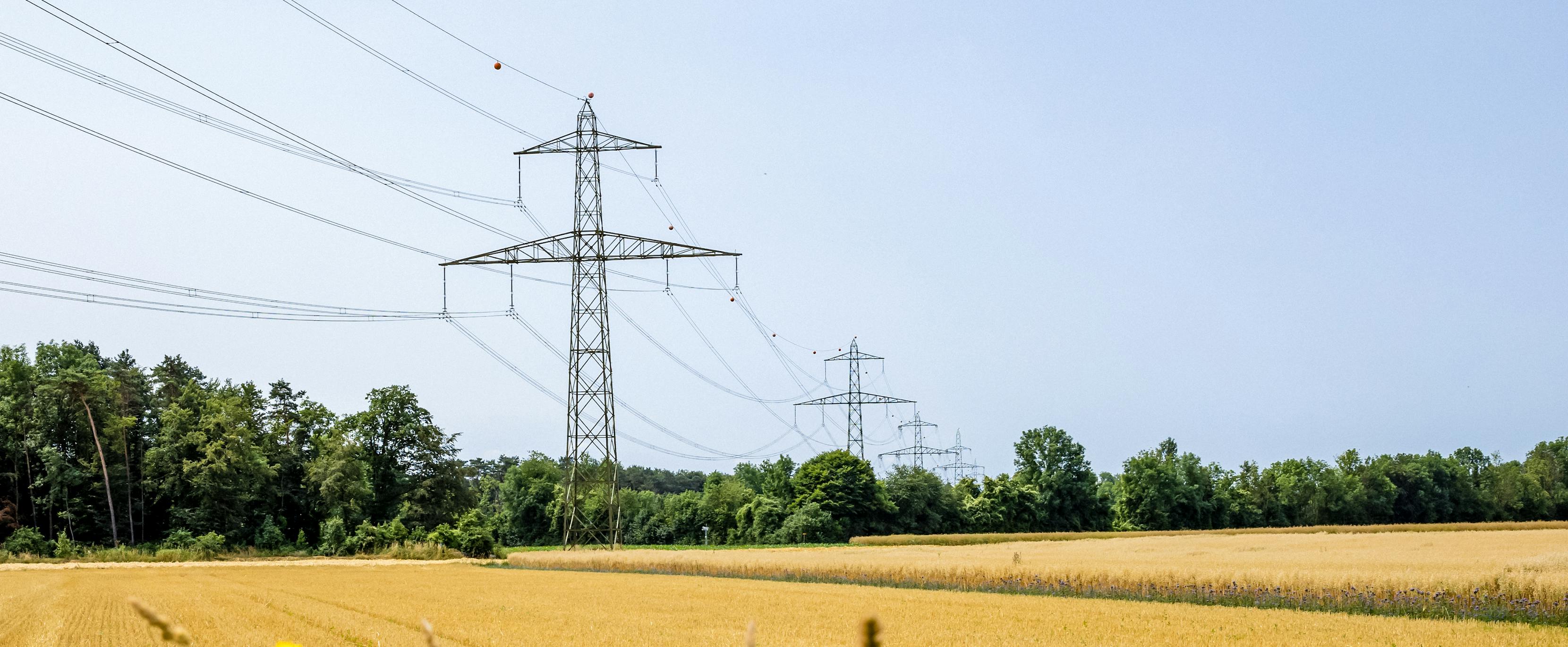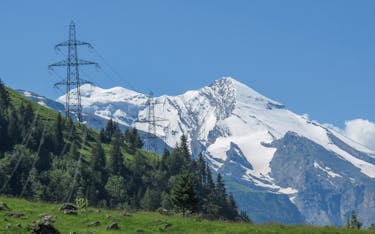Project
The 45-kilometre Bassecourt – Mühleberg line was built in 1978 and had already been approved for a voltage of 380 kV at the time. Swissgrid operated it at 220 kV until the end of July 2023 before disconnecting it from the grid for three months. During this three-month outage period, installation work was carried out to modernise the line. Swissgrid had carried out the civil engineering work in advance, starting in summer 2022, while the line was still in operation. The structural measures were necessary because the regulations and limits regarding electromagnetic fields and noise have become stricter since the line was built in 1978. After around 15 months of construction, Swissgrid successfully put the line into operation at a voltage of 380 kV on 21 November 2023.
The voltage was increased in compliance with all applicable regulations and limits regarding electromagnetic fields and noise.
The line was modernised along the existing pylons, and the landscape has not changed. In total, Swissgrid carried out work on 56 of the 142 pylons and on the guyed gantries of the two substations in Pieterlen and Bassecourt: individual pylon foundations were reinforced, twin tension strings were installed, or the cable winch tension was increased. The operation at 380 kilovolts has resulted in an increase in noise emissions that is hardly noticeable.
Swissgrid invested approximately 17 million Swiss francs in the modernisation of the Bassecourt – Mühleberg line. The project is part of the «Strategic Grid 2025», Swissgrid’s long-term grid planning.
Schedule
On 22 August 2019 the Swiss Federal Office of Energy approved the voltage increase of the extra-high-voltage line between Bassecourt and Mühleberg from 220 to 380 kilovolts and dismissed the objections. These generally related to the load from magnetic fields and the noise or demanded that the line route be relocated or cabled. Various appellants have appealed to the Federal Supreme Court against the decision made by the Swiss Federal Office of Energy. The Federal Supreme Court confirmed the planning approval for increasing the voltage of the Bassecourt – Mühleberg line, rejecting all complaints, on 23 March 2021.
Swissgrid started the necessary renovation work in August 2022. After around 15 months of construction, Swissgrid successfully put the line into operation at a voltage of 380 kV on 21 November 2023.

















